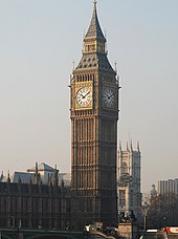Overview
London boroughs have suffered from chronic underfunding for far too long. Boroughs’ overall resources are now 22% lower in real terms than in 2010 – even though there are now 10% more Londoners (almost 800,000) to serve.
The Covid-19 pandemic added £3 billion of financial pressures to London boroughs in 2020-21 and 2021-22 but these were largely funded by national government. However, the high demand pressures in many services haven’t subsided, especially within homelessness, services for children with special educational needs and disabilities, children’s social care, and – most significantly – in adult social care. The impact of long covid, interaction with the huge NHS backlog, and increasing delayed transfers into adult social care, is leading to overspending.
Outer London boroughs, as the lowest funded authorities per capita in the country, have particularly few resources to alleviate these growing pressures.
Rising inflation and cost-of-living pressures
The energy crisis, soaring inflation, the increase in the National Living Wage and cost-of-living pressures on residents have added huge additional financial pressures to London boroughs’ budgets.
Despite the 7% increase in core spending power from the 2022-23 local government finance settlement, London boroughs need to make up to £400 million of savings this year.
That funding gap will almost double to more than £700 million next year (2023-24), based on the plans set out by the government’s most recent Spending Review. The scale of the challenge is colossal.
For context, £700 million is equivalent to:
- What London boroughs spend in total on public health each year (£703m)
- More than London boroughs spend on homelessness and housing services (£615m)
- Retrofitting 27,000 homes to help achieve London’s net zero goal
- Delivering 46,000 apprenticeships to boost young Londoners’ skills and employment opportunities
- A year of care for 64,000 Londoners in nursing homes.
Local authorities are highly dependent on central government funding. There is no realistic way that boroughs could currently raise the £700 million through other means. If boroughs were to try raising the £700 million from London’s council taxpayers, council tax bills would need to rise by around 18%. Without a significant increase in funding, a further £700 million will be required in 2024-25 and 2025-26.
In total, the forecast funding gap is £2.4 billion over the next four years – which is almost £1 billion higher than London boroughs were planning for a year ago. This is the most challenging outlook boroughs have faced since 2010. Any further cuts to council funding will make the situation even tougher.
Difficult decisions for London boroughs
There is no painless way for London boroughs to make savings on the scale required. Any low hanging fruit and basic efficiencies are long gone. Staff numbers have been reduced by a third (80,000) since 2010. Many boroughs have delivered significant transformational programmes, which can only be done once.
London boroughs have worked hard to protect their budgets, but many now face the prospect of having to make severe cutbacks to vital services including bin collections and filling potholes, social care for adults and children, support for low-income households and preventing homelessness.
To deal with this challenge, boroughs are now starting to discuss some incredibly tough choices which they haven’t had to do before. These include:
- Cutting back adults and children’s social care packages to the statutory minimum
- Cutting back community safety and domestic violence to the statutory minimum
- Cutting back homelessness services to the statutory minimum
- Cutting voluntary sector funding
- Cutting back youth services
- Withdrawal from the delivery of adult social care day services
- Withdrawal from the delivery of leisure services
- Reductions in Home to School transport
- Turning off street lighting
- Less frequent waste collection
- Less frequent street cleansing
- Reducing public health support on obesity, and smoking cessation
- Increasing parking charges
- Significant asset rationalisation
How the government can help to protect local services
Cuts to council services will damage our communities. However, they will also undermine the government’s ambitions to boost economic growth, level up the country, and help residents through the cost-of-living crisis.
The pandemic showed what London boroughs could do when adequately funded and given the powers to deliver more for our residents. We need the same partnership approach between central and local government for tackling cost-of-living pressures.
We’re therefore asking for local government to be protected from further cuts by increasing business rates and grant funding in line with inflation next year. The government must stick to the funding plans set out in the Spending Review at the very least, rather than make any further reductions to council budgets.
Boroughs desperately need more certainty over longer-term funding to ensure public money is spent well. Despite the three-year Spending Review, local government only had a one-year settlement (effectively for the fourth year in succession), and there continues to be no clarity about plans for wider reforms to local government funding.
We’re asking for the government to confirm a two-year local government finance settlement and publish it as soon as possible.

